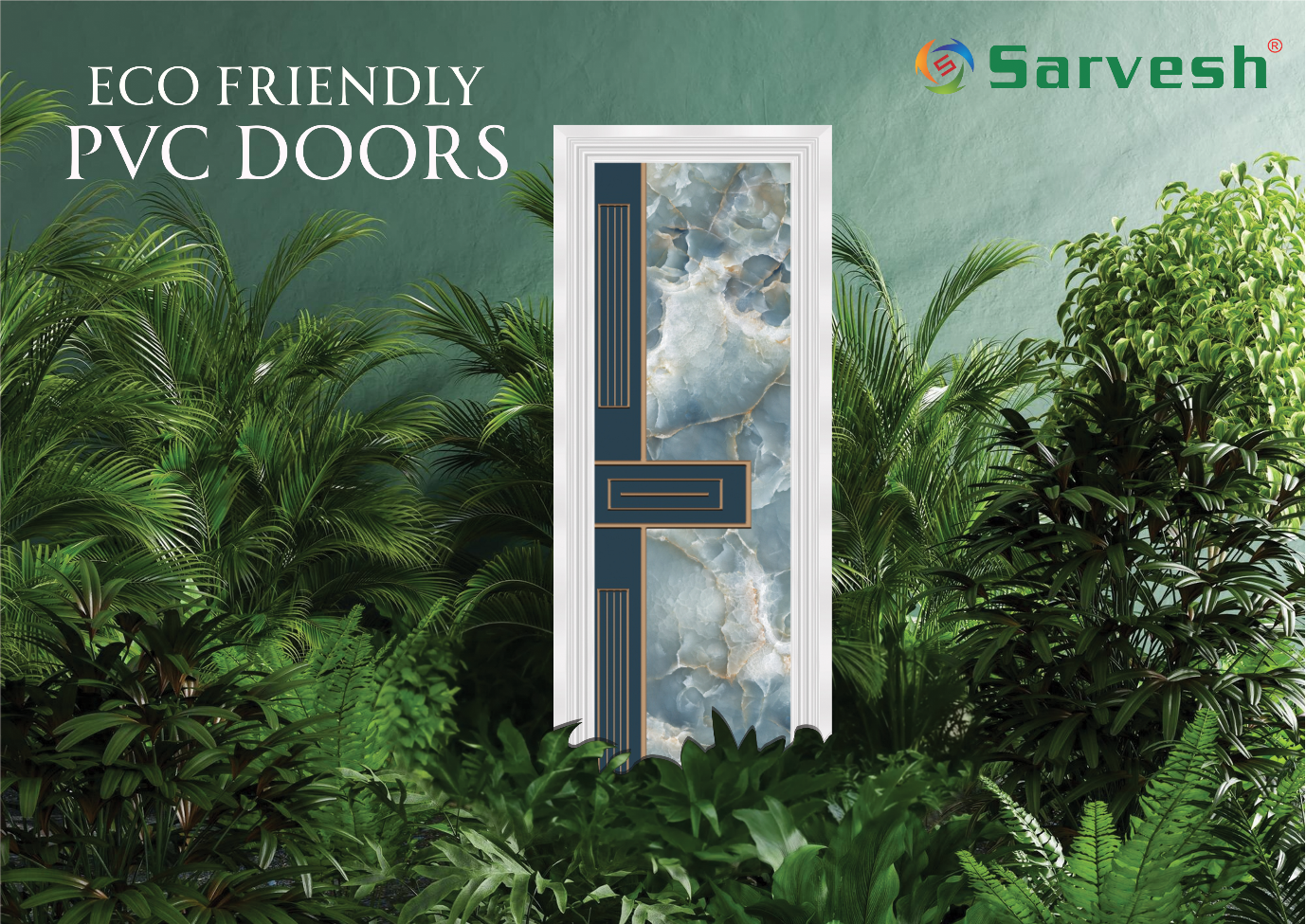Blogs
Why PVC is the Smart and Eco-Friendly Choice for Modern Construction and Interiors

In the evolving world of construction and interior design, material selection plays a crucial role in balancing performance, aesthetics, and sustainability. One material that continues to stand out across all these aspects is PVC (Polyvinyl Chloride). Once known mainly for plumbing applications, PVC has now found widespread use in everything from doors and windows to wall panels, ceilings, and furniture cladding.
At Sarvesh PVC, we’ve embraced this innovation through our brand Sarvesh, offering a diverse range of PVC products that are not only durable and stylish—but also environmentally responsible.
What Makes PVC a Great Material?
PVC offers several benefits that make it an ideal material for modern buildings:
1. Durability and Longevity
PVC products are highly resistant to water, corrosion, termites, and chemicals. Whether used in wet areas like bathrooms (e.g., Fixit doors) or in high-traffic zones, PVC holds up for years without warping, swelling, or losing color. Its longlife cycle means less frequent replacement and reduced material waste over time.
2. Low Maintenance
Unlike wood or metal, PVC requires no polishing, painting, or sealing. It can be easily cleaned with a damp cloth, saving time, money, and effort for homeowners and facility managers alike.
3. Lightweight and Easy to Install
PVC doors, wall panels, and laminated sheets are light in weight, making transportation and installation simple and cost-effective. For projects where time and efficiency matter, PVC becomes a highly convenient option.
4. Cost-Effective
PVC products offer the look of premium materials at a fraction of the cost. Whether it’s a digital printed door or a laminated panel, you get high-end aesthetics without overspending.
Is PVC Eco-Friendly?
This is a common question—and the answer is yes, PVC can be eco-friendly when used and managed responsibly. Here’s how:
1. Recyclability
PVC is 100% recyclable. Waste and scrap from PVC production or old PVC products can be processed and reused in making new items, reducing landfill waste and conserving resources.
2. Low Environmental Impact During Use
PVC is inert and stable, meaning it doesn’t emit harmful gases during its lifetime. Products like PVC doors and panels help improve indoor air quality because they do not require VOC-emitting paints or coatings.
3. Energy Efficiency
PVC’s excellent insulation properties help reduce heat transfer. This contributes to better indoor temperature control and lower energy consumption for heating and cooling—leading to reduced carbon emissions.
4. Saves Forest Resources
By replacing traditional wood in applications like doors, frames, and panels, PVC helps reduce deforestation and the environmental impact associated with wood harvesting and processing.
Sarvesh PVC: A Step Towards Sustainable Innovation
At Sarvesh PVC, we’re not just committed to quality—we’re committed to responsible innovation. Our Sarvesh range of PVC products is designed to support sustainable building practices while offering top-tier performance and design flexibility.
Whether you’re building a new home, renovating an office, or outfitting a commercial space, choosing PVC means choosing a material that is durable, economical, and better for the environment.
Trending Blogs
© 2025, Sarvesh. All rights reserved.